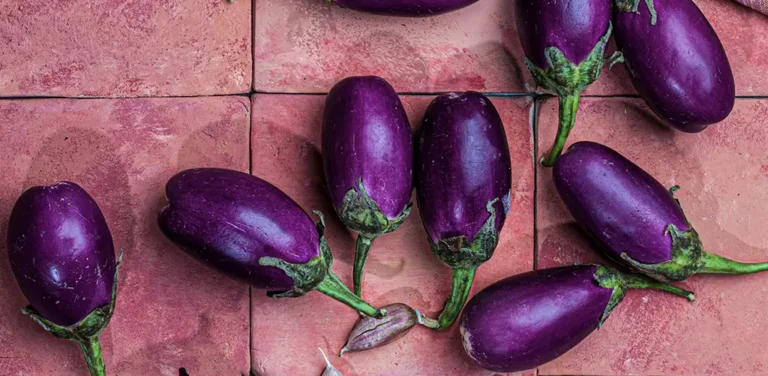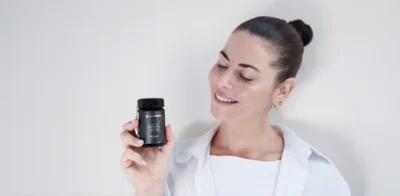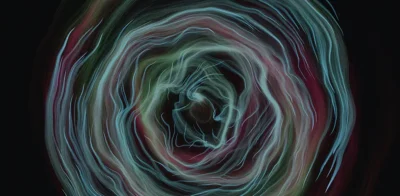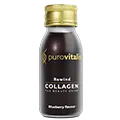
Anthocyanins are natural pigments produced by plants, giving fruits and vegetables like blueberries, red cabbage, black carrots, and purple corn their deep red, purple, and blue tones. They belong to the flavonoid family – a group of over nine thousand identified plant compounds known for their protective roles in both plants and human health [1]. Among these, anthocyanins stand out with more than 700 different structures discovered so far. They not only bring vibrant color but are also found in some of the most nutrient-dense foods we eat [2].
If you are looking to read more about the benefits of anthocyanins, read here: Function and benefits of anthocyanins
Anthocyanins in plants and wild herbs
These pigments aren’t limited to popular fruits and vegetables. Anthocyanins are widespread across the plant kingdom and also show up in leaves, stems, and even roots. Some wild herbs and weed contain anthocyanins too, especially those with deep red or purple coloring. Though not always edible, these plants are valuable in research on how anthocyanins work and how they protect plants under stress.
Anthocyanins rich foods
Now that we know, that anthocyanins are plant-based pigments found in fruits and vegetables with deep red, purple, and blue hues. But the amount can vary more than you’d think. Research shows that factors like plant variety, climate, growing location, harvest time, and storage all influence anthocyanin levels[3]. A sun-ripened, locally grown blueberry can contain significantly more than one that’s been picked early and shipped across the globe. While berries often get all the attention, there are plenty of powerful sources beyond the fruit bowl. Anthocyanins in food can also come from black rice, purple corn, red cabbage, and black beans—some even higher than in berries.
Anthocyanins in fruits and berries
When it comes to anthocyanins in food, berries tend to steal the spotlight – and for good reason. These plant-based pigments are especially concentrated in fruits with deep red, purple, or blue skin. But it’s not just about blueberries and blackberries. Some grapes, cherries, and even black elderberries offer impressive amounts too. Let’s take a closer look at where to find the most anthocyanins in everyday fruits.
Blackberries are full of anthocyanins
Blackberries are naturally rich in anthocyanins, especially the compound cyanidin-3-glucoside. Their deep purple-black color signals a high content of these plant pigments. Studies show that blackberries can contain up to 300 mg of anthocyanins per 100 grams, depending on variety and ripeness. Alongside their antioxidant compounds, they’re also a good source of fiber and vitamin C[(5)].
Mulberries and anthocyanins
Mulberries are small berries that grow on trees and have been used in traditional medicine for centuries. They come in black, red, and white varieties – and it’s the black mulberries that are especially high in anthocyanins.
In a Korean study from 2020, 12 different mulberry cultivars were grown under the same conditions and compared. The variety Iksu had the highest anthocyanin content – 28.6 mg per gram of dried fruit, which equals about 286 mg per 100 grams of fresh berries.The main compound was cyanidin-3-O-glucoside, which is also found in blueberries and blackcurrants. Levels varied widely between cultivars – some had almost none, while Iksu and Shimgang ranked highest in both anthocyanins and antioxidant activity[4].
Blueberries and anthocyanin content
Blueberries are small but mighty. Especially wild and deepblue varieties are packed with anthocyanins. Studies show that blueberries can contain up to 400 mg per 100 grams, depending on type and growing conditions [5]. The dominant compounds are malvidin and delphinidin derivatives, which are well-known for their antioxidant properties. So the deeper the color, the better the berry, when it comes to anthocyanins in blueberries.
Cherries as a source of anthocyanins
Sour cherries aren’t just delicious – they also contain good amounts of anthocyanins. A Croatian study comparing different cherry varieties found big differences. The Oblačinska type had the highest level, with 28 mg per 100 grams, while others like Erdy Jubileum had as little as 2.7 mg. Most of the content came from just two types of anthocyanins. While cherries don’t match the levels found in berries like blueberries, they’re still a valuable source of antocyanins– especially in juice, which sometimes had even higher amounts than the fresh fruit. Just remember to check the sugar content if you go for cherry juice as your healthy option [6].
Grapes with high anthocyanin levels
Some grapes have more to offer than just great flavor. Teinturier grapes – red-fleshed varieties – are packed with anthocyanins in both skin and pulp. A Hungarian study looked at 15 of these grapes and found big differences between them. The variety Kurucvér had some of the highest levels in the skin – up to 50 mg per gram, while Royalty and Cabernet Mitos had juice with nearly 1000 mg per liter. Most of the color came from a few dominant anthocyanins, which also have antioxidant properties. Some rare forms were even found in a few types, usually only seen in wild grapes. With their intense color and high content, these grapes are not just useful for wine – they may also have potential as a natural source of antioxidants in food [7].
Does wine contain anthocyanins too?
Yes, it does. Red wine gets its deep color from anthocyanins in the grape skins. These pigments are released during fermentation – especially when the skins stay in contact with the juice, as they do in red wine. The amount depends on the grape variety, ripeness at harvest, and how the wine is made. While wine doesn’t have as many anthocyanins as berries like blueberries or blackcurrants, it still contains small amounts that affect both color and taste [8]. Just remember to enjoy wine in moderation, as too much alcohol can harm your health.
Related: Can you get enough Resveratrol from grapes and wine, or is supplementation necessary?
Vegetables with anthocyanins
It’s not just berries and fruits that bring anthocyanins to your plate—some vegetables are surprisingly rich sources too. From purple sweet potatoes to red cabbage, certain veggies carry the same deep pigments that give berries their vibrant color. Let’s take a closer look at where to find the most anthocyanins in everyday vegetables
Red cabbage and its stable anthocyanins
Red cabbage contains high amounts of stable, acylated anthocyanins that hold up well during cooking—especially when steamed. They’re more resistant to heat and pH changes than those found in many fruits, which makes them useful as natural food colorants. Studies also suggest that these compounds may have antioxidant and anti-inflammatory effects, adding to red cabbage’s nutritional value [9].
Purple sweet potato anthocyanins
Purple sweet potatoes are a natural source of anthocyanins—the pigments responsible for their deep purple color. Most of these are acylated anthocyanins, which are more stable during cooking than those typically found in berries. Research shows that the outer layer of the sweet potato contains particularly high levels and also demonstrates strong antioxidant activity. This makes purple sweet potatoes interesting both nutritionally and as a natural alternative to synthetic food colorants [10].
Anthocyanins in beetroot
Beets often get grouped with anthocyanin-rich veggies due to their deep red color—but here’s a fun fact: their red pigment comes from betalains, not anthocyanins. That said, they’re still antioxidant-rich and beneficial for blood pressure and circulation. So while beets don’t count toward your anthocyanin intake, they’re still worth keeping on the menu for other reasons [11].
Anthocyanins as supplements?
If you’re not eating enough colorful fruits and vegetables every day, anthocyanins extract may be a convenient option. These supplements are typically made from concentrated berry or purple vegetable powders and come in various forms—such as anthocyanins pills, capsules, or drinkable powders.
That said, food is always the preferred source. Getting anthocyanins from fruits and vegetables doesn’t just boost your anthocyanin intake—it also supports overall health by providing fiber, vitamins, and other beneficial plant compounds
Anthocyanin support in collagen
Some innovative products now combine anthocyanins with other nutrients to support skin and connective tissue. For example, Purovitalis Rewind Liquid Collagen contains naturally sourced anthocyanins as a supporting ingredient—along with bovine hydrolyzed collagen, glycine, and key vitamins that contribute to collagen production and skin elasticity.
Want to know more about glycine and its role in collagen support? Read more here
If you’re considering anthocyanins supplements, look for options that are transparent about their content and made from well-researched sources like blackcurrant, blueberry, or purple sweet potato.
Conclusion: How anthocyanins support your health
They’re found in many of the fruits and vegetables we already eat, adding not only vibrant color and flavor, but also potential health benefits. Whether you get them from fresh berries, purple vegetables, or a supplement like anthocyanins extract or pills, they’re a natural and exciting part of a varied diet. The darker and deeper the color, the better!
References
- Wang, Y., Chen, S., & Yu, O. (2011). Metabolic engineering of flavonoids in plants and microorganisms. Applied Microbiology and Biotechnology, 91(5), 949–956.
- Wallace, T. C., & Giusti, M. M. (2019). Anthocyanins—Nature’s bold, beautiful, and health-promoting colors. Foods, 8(11), 550.
- Mattioli, R., Francioso, A., Mosca, L., & Silva, P. (2020). Anthocyanins: A comprehensive review of their chemical properties and health effects on cardiovascular and neurodegenerative diseases. Molecules, 25(17), 3809
- Kim I, Lee J. Variations in anthocyanin profiles and antioxidant activity of 12 genotypes of mulberry (Morus spp.) fruits and their changes during processing. Antioxidants. 2020 Mar 17;9(3):242. https://doi.org/10.3390/antiox9030242
- Wu, X., Beecher, G. R., Holden, J. M., Haytowitz, D. B., Gebhardt, S. E., & Prior, R. L. (2006). Concentrations of anthocyanins in common foods in the United States and estimation of normal consumption. Journal of Agricultural and Food Chemistry, 54(11), 4069–4075.
- Šimunić, V., Kovač, S., Gašo-Sokac, D., Pfannhauser, W., & Murkovic, M. (2005). Determination of anthocyanins in four Croatian cultivars of sour cherries (Prunus cerasus). European Food Research and Technology, 220(5), 575–578.
- Kőrösi L, Molnár S, Teszlák P, Dörnyei Á, Maul E, Töpfer R, Marosvölgyi T, Szabó É, Röckel F. Comparative study on grape berry anthocyanins of various teinturier varieties. Foods. 2022;11(22):3668. doi:10.3390/foods11223668
- Allegro G. et al. (2021). The Evolution of Phenolic Compounds in Vitis vinifera L. Red Berries during Ripening. Agronomy, 11(5), 999.
- Ghareaghajlou, N., Hallaj-Nezhadi, S., & Ghasempour, Z. (2021). Red cabbage anthocyanins: Stability, extraction, biological activities and applications in food systems. Food Chemistry, 365, 130482.
- Im, Y.R., Kim, I., & Lee, J. (2021). Anthocyanin and phenolic compound profiles and antioxidant activity in the inner and outer layers of Korean purple sweet potato cultivars. Antioxidants, 10(3), 462.
- Fu, Y., Shi, J., Xie, S.-Y., Zhang, T.-Y., Soladoye, O. P., & Aluko, R. E. (2020). Red beetroot betalains: Perspectives on extraction, processing, and potential health benefits. Journal of Agricultural and Food Chemistry, 68(42), 11795–11803.
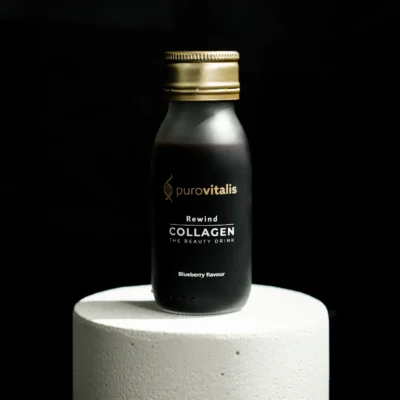
Experience the best of Collagen with Purovitalis liquid formula. Try it out!

